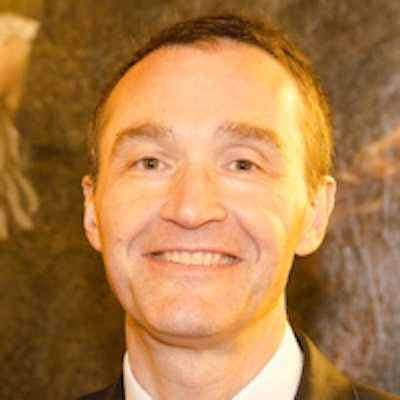
Concerns have been raised by the president of the European Association of Nuclear Medicine (EANM), Dr. Arturo Chiti, about the risk of duplicating efforts in the emerging field of hybrid imaging after the European of Radiology's (ESR) recent announcement of the formation of the European Society for Hybrid Medical Imaging (ESHI).
He described how his multidisciplinary society was pivotal in promoting and supporting multimodality education among its members, and said he was puzzled to hear the ESR felt the need to establish another subspecialty society that aimed to undertake similar work to that of EANM.
 Multidisciplinary disease teams will include imaging specialists with expertise in genetics and pathology, according to Dr. Arturo Chiti.
Multidisciplinary disease teams will include imaging specialists with expertise in genetics and pathology, according to Dr. Arturo Chiti."Without radiopharmaceuticals and hybrid imaging, there is no nuclear medicine. We have therefore had these elements at the heart of our initiatives for many years. Indeed, SPECT/CT, PET/MRI, and PET/CT are fundamental to nuclear medicine and most nuclear medicine departments have multimodality scanners," he told AuntMinnieEurope.com in an interview.
"Our goal is to transfer good skills to those who want to learn about radiopharmaceuticals and hybrid imaging. I'm not happy that providing education has become competitive. If we had been consulted before ESHI was created, we could have each focused on particular educational needs for our range of members, in order to provide a more specific and focused agenda for hybrid imaging training. However, we were simply informed after the event, and we risk wasting time and investment by duplicating our efforts," he noted.
That said, ESR and ESHI are due to meet with representatives of EANM to evaluate whether or not there is room for collaboration, according to Chiti, who is director of the nuclear medicine department at Humanitas Research Hospital, full professor of diagnostic imaging at Humanitas University in Milan, and a member of AuntMinnieEurope.com's editorial advisory board.
He went on to discuss EANM's current project: the creation of a syllabus about nuclear medicine, written in collaboration with the European Union of Medical Specialists (Union Européenne de Médecins Spécialistes, UEMS). The syllabus, due to be ready by 2017, will be a complete guide to working with radiopharmaceuticals, performing and interpreting hybrid imaging such as PET/CT, and the educational, organizational, and technological requirements to do so.
The syllabus stemmed partly from three priorities decided on by the EANM at the end of 2014. One of the priorities is education in multimodality imaging with radiopharmaceuticals for diagnosis, therapy response assessment, and risk classification of patients. This document is intended to help contribute to the strategy of personalized medicine, particularly in oncology. The other two goals are standardization of procedures and working to make radiopharmaceuticals more available throughout Europe.
"It is of great importance to EANM to make radiopharmaceuticals equally accessible across member states, as this is still hampered by national legislation," Chiti said. "We are working with the European Medicines Agency (EMA) and other European actors such as the European Cancer Organization (ECCO), and the European Alliance of Personalized Medicine (EAPM) to promote the use of radiopharmaceuticals across Europe."
He points to the EANM's practical work in the assessment of the clinical usefulness and safety of certain radiopharmaceuticals. One example is carbon-11 choline for prostate cancer for which EANM in collaboration with academic centers helped establish dosage and imaging protocols, and quality standards.
Vision of the future
Furthermore, Chiti described his vision of how nuclear medicine and hybrid imaging may develop over the next 20 years. He envisages a medical world in which specialties will comprise multidisciplinary teams related to specific diseases, such as lung cancer, dementia, coronary heart disease, and even infectious disease.
"Expertise will overlap into different fields. For example, some doctors will not just be specialized in imaging, but also in correlating images with pathological and genetic data," he said. "The field of radiomics is just at its beginning but in the future, routine clinical practice will involve correlating imaging patterns with the genetic patterns of a tumor. This will mean that the doctor or doctors involved will have to know about imaging, tumor genetics, and molecular aspects of the tumor."
He believes that nuclear medicine will remain an independent key player within a broader multidisciplinary context and the nuclear medicine physician will, for example, become an expert in imaging radiopharmaceuticals with PET/MR to assess response prediction, but with the additional knowledge base of tumor genetics.
"Deciding which imaging (multi)modality is best for which patient will be the remit of an imaging specialist, with a deep knowledge of the genetic, molecular, and clinical characteristics of the disease," Chiti said.




















